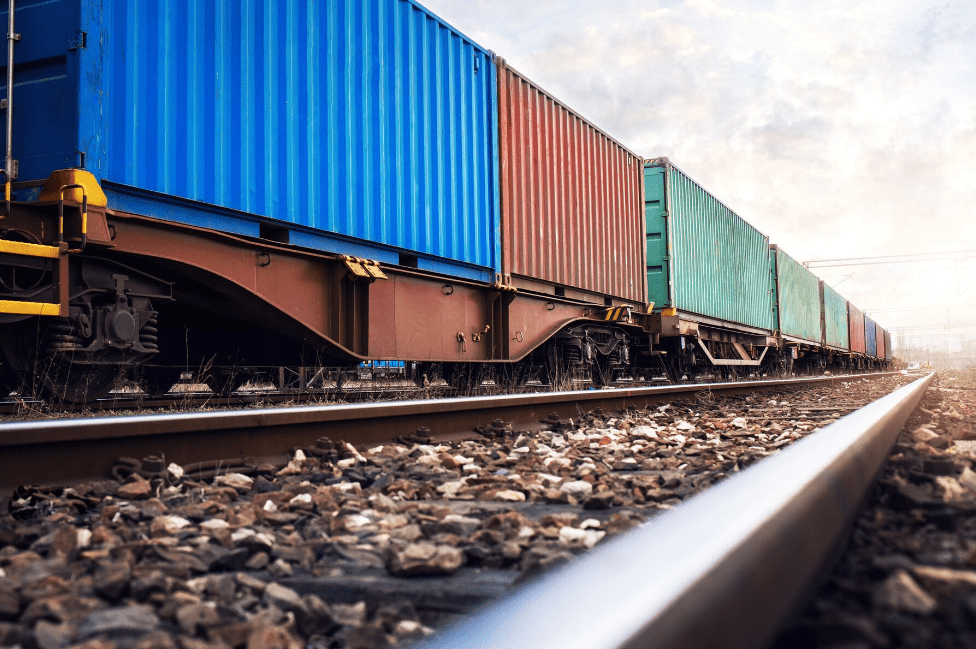Are you a freight newbie feeling lost in the maze of cargo chaos? Fret not! We’ve got the ultimate freight transportation guide to transform you from shipping zero to hero!
Air Freight: The Speed Demons

Defining Air Freight
So, first things first – air freight. Imagine it as the “speed demons” of transportation. Air freight is all about getting your goods from point A to point B in the blink of an eye. It’s like the express lane for cargo.
Advantages of Air Freight
One of the coolest things about air freight is its need for speed. If you’ve got time-sensitive goods, like fresh produce or high-demand products, air freight is your go-to. When time is of the essence, air freight stands as the swiftest delivery choice in the race against the clock.
Drawbacks of Air Freight
Now, let’s be real – speed comes at a cost. Air freight can be pricier compared to other modes, and there are size and weight restrictions. So, if you’re shipping a massive sculpture of a dinosaur, you might want to consider other options.
Maritime Shipping: The Ocean Giants

Understanding Maritime Shipping
Next up, we have maritime shipping, the “ocean giants” of freight transportation. You might have seen these enormous ships sailing across the seas, carrying everything from cars to electronics.
Advantages of Maritime Shipping
Maritime shipping is all about scale. It’s the golden ticket for businesses engaged in bulk transport, offering unparalleled efficiency and cost-effectiveness over the expanses of the open seas. Whether you’re moving raw materials, manufactured goods, or even entire vehicles, maritime shipping’s capacity for scale ensures that your cargo sails smoothly towards its destination, riding the waves of logistical success.
Challenges of Maritime Shipping
Be prepared for a reality check – maritime shipping isn’t always a smooth ride. The journey may stretch a bit due to longer transit times, and navigating the intricate web of port logistics can feel like finding your way through a maze. Picture the hustle and bustle of busy ports, with various processes and checks to ensure the safe passage of your cargo. Patience becomes your trusty companion in this maritime adventure, as understanding and working through these intricacies will ultimately lead to successful deliveries. So, brace yourself for a few waves, keep a steady hand on the helm, and remember: in the world of maritime shipping, patience truly is the compass guiding you through the labyrinth of logistics.
Rail Freight: The Land Cruiser

The Lowdown on Rail Freight
Let’s shift our focus to the domain of rail freight, often acknowledged as the robust “land cruisers” within the intricate tapestry of transportation. Rail freight stands as a testament to reliability, showcasing a methodical and structured approach to cargo transport that not only ensures timely deliveries but also underscores sustainability with a reduced carbon footprint. In essence, these locomotives symbolize a well-established and steadfast mode of freight transportation, providing a backbone for the movement of goods on land.
Perks of Rail Freight
Rail freight is like the unsung hero of sustainability. It has a smaller carbon footprint compared to some other modes of transportation, making it a favorite for eco-conscious shippers. I remember shipping a load of recyclable materials, and rail freight was the perfect choice for that eco-friendly journey.
Challenges of Rail Freight
Yet, like any superhero, rail freight has its kryptonite – limited accessibility. It’s great if your destination aligns with the rail network, but if not, you might need to explore other options.
Road Freight: The All-Terrain Warriors

Introducing Road Freight
Step onto the open road of logistics with our exploration of road freight. Road freight plays a critical role in the seamless movement of goods. From urban deliveries to cross-country hauls, uncover the power, flexibility, and challenges that make road freight a cornerstone in the world of transportation.
Why Choose Road Freight
Road freight is the jack of all trades. It’s versatile, reaching places other modes might struggle with. Need to deliver goods to a small town or a remote location? Road freight has got you covered. Whether your shipping to a remote town or just around the corner, road freight can make it happen without a hitch.
Roadblocks in Road Freight
However, there’s always a traffic jam on the road to perfection. Road freight can face congestion issues, and the environmental impact is a concern. Balancing efficiency with eco-friendliness is the name of the game here.
How Do I Choose the Right Mode of Transportation?
Choosing the right mode for your freight is akin to selecting the perfect tool for a task. Carefully evaluate your cargo’s characteristics, the distance it needs to travel, its time sensitivity, and your budget. Much like a craftsman seeks precision in tool choice, shippers must consider these factors to ensure a seamless and efficient transportation process. Whether it’s a swift airborne journey for time-sensitive goods or a more cost-effective land or sea route for bulk shipments, aligning your choice with specific needs guarantees a successful and well-planned logistics strategy.
Conclusion
Phew! That was a whirlwind tour of the freight transportation universe. As a newbie, don’t be afraid to explore these options and find what suits your business best. Each mode has its strengths and weaknesses, but understanding them is your ticket to smooth sailing (or flying or cruising or driving) in the world of freight transportation.
Remember, it’s not just about moving goods – it’s about doing it smartly. So, gear up, embrace the journey, and happy shipping!

